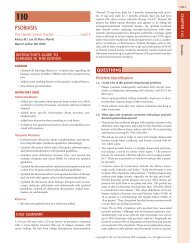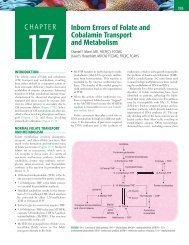Six Sigma Software Quality Improvement
Six Sigma Software Quality Improvement
Six Sigma Software Quality Improvement
You also want an ePaper? Increase the reach of your titles
YUMPU automatically turns print PDFs into web optimized ePapers that Google loves.
Executive Overview of <strong>Six</strong> <strong>Sigma</strong> | 21<br />
▲ Provide an excellent opportunity to the project sponsor and senior management to<br />
visibly demonstrate their commitment to the project and the <strong>Six</strong> <strong>Sigma</strong> program<br />
▲ Allow the project sponsor and other stakeholders to assess whether the project is<br />
following the <strong>Six</strong> <strong>Sigma</strong> methodology and using the correct tools to systematically<br />
arrive at the final solution<br />
▲ Provide an excellent opportunity to the project leader to seek the sponsor’s support to<br />
remove barriers and address risks that the project team may be encountering<br />
Project reviews are meant to be short and crisp, with probing questions from the<br />
sponsor and other stakeholders that challenge the project team and enable them to remain<br />
focused on the end goal. Recommended questions for project reviews, depending on the<br />
current status of the project, are 17 :<br />
▲ What is the problem statement and goal statement?<br />
▲ Has your project charter been approved?<br />
▲ Is your project on track per the schedule? Are there any risks or roadblocks you need<br />
help with?<br />
▲ Based on your data analysis, what are the top four or five causes that account for 80<br />
percent of the problem?<br />
▲ Based on the root causes, what corrective actions do you recommend?<br />
▲ What is the status of the implementation of corrective actions?<br />
▲ What is the actual or anticipated improvement in performance as a result of these actions?<br />
▲ What is the financial benefit from your project? Show how you arrived at this benefit.<br />
▲ How will you ensure that the improvements resulting from this project will be<br />
permanent, and how will we be able to detect any deviation from expected<br />
performance levels?<br />
12. Develop a robust deployment plan<br />
There is no sure-fire and quicker way to a failed <strong>Six</strong> <strong>Sigma</strong> implementation than a poor<br />
deployment plan. Committed senior management is a prerequisite to institutionalize <strong>Six</strong><br />
<strong>Sigma</strong> in a company, but it is not a guarantee for success. Therefore, it is important that<br />
the deployment team carefully strategize about how it will deploy <strong>Six</strong> <strong>Sigma</strong>. Fascinating<br />
stories from Cisco, Reuters, and Convergys appear later in the book, but here is some quick<br />
advice to get you started:<br />
▲ Start with senior management and educate them on <strong>Six</strong> <strong>Sigma</strong>—what it is and how<br />
they can benefit from it. Be sure to include success stories and benefits realized by<br />
other companies in the same industry or, even better, from direct competitors.<br />
▲ Train a small team of improvement specialists who will participate in piloting or<br />
proving out the relevance and benefits of <strong>Six</strong> <strong>Sigma</strong> to your company. Pilot projects<br />
should be those whose importance is readily apparent to the workforce, can be<br />
accomplished in a relatively short amount of time, and whose resulting operational<br />
and financial benefits can be easily quantified. Successfully concluded pilot project(s)<br />
will provide you with the credibility, management support, and impetus to move

















